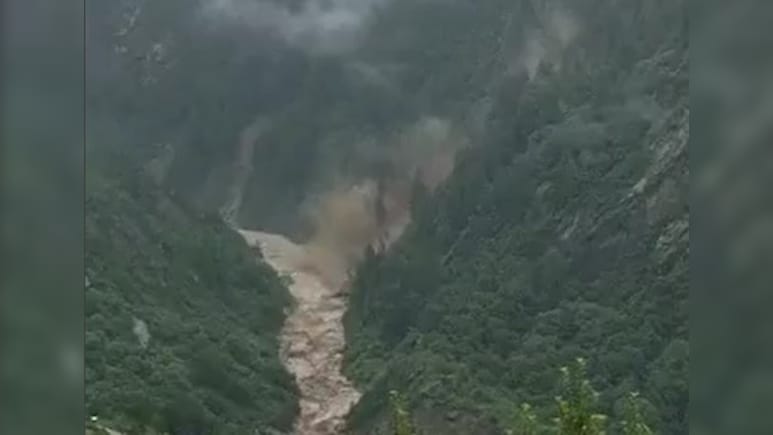
- Cloudburst defined as over 100 mm rainfall in under an hour, causing sudden floods and landslides
- Cloudbursts result from moist air rising rapidly over mountains, triggering intense rainfall
- A cloudburst hit Dharali village in Uttarkashi, causing flash floods and destruction of houses
A cloudburst struck Dharali village near Harsil in Uttarakhand's Uttarkashi district on Tuesday, triggering flash floods that swept away several houses with many feared missing.
Rising waters from the Kheer Ganga river engulfed homes and caused widespread destruction. Visuals captured the torrent rushing downhill, tearing through structures as bystanders shouted for residents to evacuate.
Uttarakhand Chief Minister Pushkar Singh Dhami said the government has deployed emergency teams for rescue operations. The Army has also moved into the area to assist in search and rescue efforts.
What Is A Cloudburst?
A cloudburst is an extreme amount of rainfall in a short period, often over a small geographical area. It typically occurs in mountainous regions and can lead to sudden flash floods and landslides.
The term refers not to a literal bursting cloud but to rapid precipitation from cumulonimbus clouds, sometimes accompanied by thunder or hail.
By definition, a cloudburst involves 100 mm (4 inches) or more of rainfall within an hour. That is roughly the amount of rain some cities receive in a month, all in under 60 minutes.
How Do Cloudbursts Occur?
Cloudbursts happen when warm, moist air quickly rises over mountains, cools down, and turns into heavy rain. This process, called orographic lift, causes the air to release a large amount of rain in a short time.
Other factors like the sudden mixing of warm and cold air, strong upward air movement (convection), and high moisture in the air at high altitudes can also lead to cloudbursts.
Why Do Cloudbursts Happen In The Hills?
- Topography: Mountains force moist air to rise rapidly, causing sudden cooling and condensation.
- Weather Conditions: Warm air with high moisture content meets cooler air at high altitudes.
- This results in intense convection and localised torrential rain.
Impacts And Risks Of Cloudbursts
- Trigger sudden flash floods, debris flows, and landslides.
- Cause widespread destruction of homes, roads, and public infrastructure.
- Leads to significant loss of life. At least 35 people died in Asi Ganga (2012), 69 in Rudraprayag (2012), and over 4,000 in the 2013 Kedarnath disaster.
- Disrupt power, water supply, and communication networks in affected regions.
- Displace thousands of residents, leading to long-term livelihood and economic losses.
- Accelerate environmental degradation, including soil erosion and forest loss.
What Can Be Done?
- Early warning systems and weather monitoring in vulnerable regions.
- Evacuation protocols in place during monsoon season.
- Awareness and preparedness in local communities.
Track Latest News Live on NDTV.com and get news updates from India and around the world

